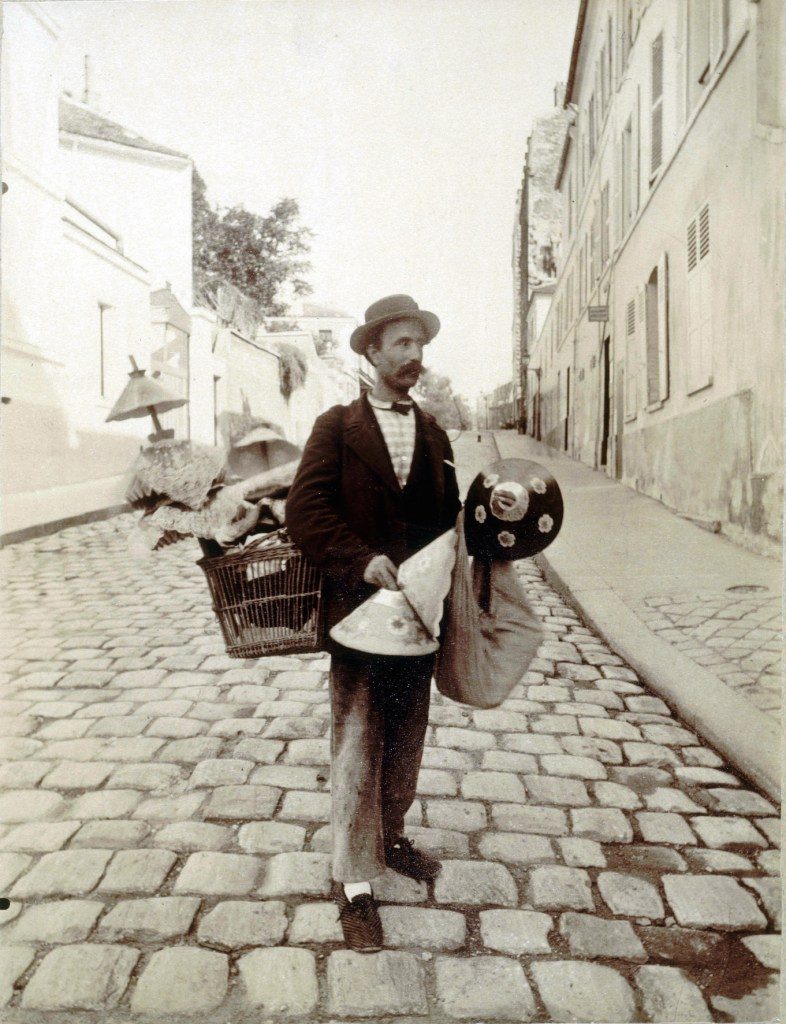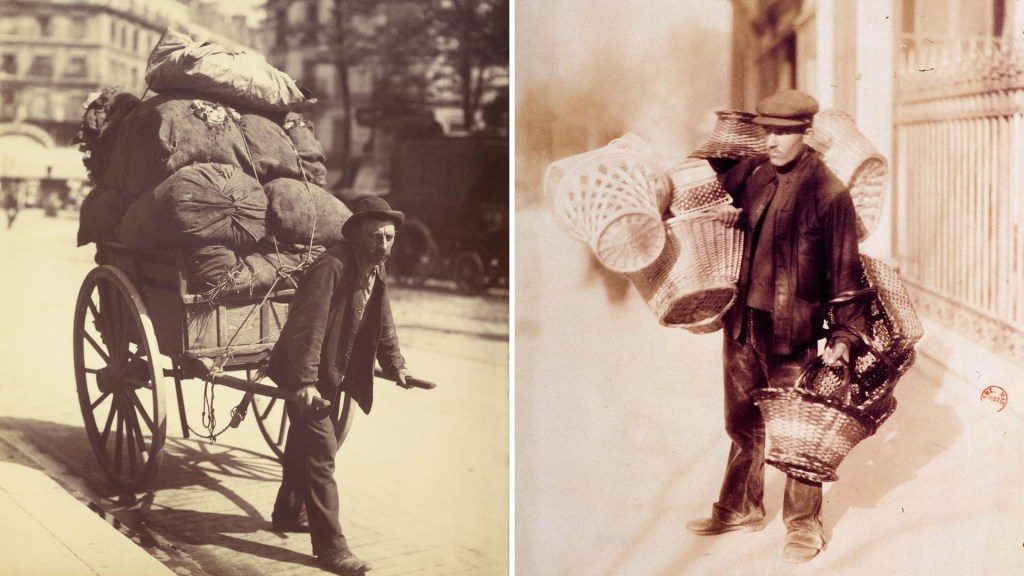
Eugéne Atget, Parisians, and Le Vieux Paris
In the late nineteenth century, before photography was widely accepted as an art form, Parisian Eugéne Atget started photographing various aspects of Parisian culture including architecture, people and landscapes. One of his first series, Petit-métiers, spanned from 1898 to 1900 and contains some of Atget’s only portraits. Lead by professional and personal motivations Eugéne Atget’s raw, uninhibited photographs of Parisians, like Marchand Abat-Jours (Street Vendor), preserved the character and personality of not only of a rapidly-changing Paris but also of his ordinary, unassuming subjects.
As a commercial photographer, Atget’s photographs were used by other artists for reference in their own works. Atget was successful as a commercial photographer because of the unprecedented level of truthfulness and fidelity that he delivered. Using a long lens — and putting more space between the viewer and the subject — Atget was able to accurately portray the proportions of the subject and his surroundings. Atget created a sense of physical closeness to the subject by carefully constructing compositions and placing nothing but air between the viewer and subject. This simultaneous closeness and clarity was important to Atget’s clients who needed raw, detailed images that they could reference.

Marchand d’abats-jour, rue Lepic, 1899. Photographie d’Eugène Atget (1857-1927). Paris, musée Carnavalet.
While he was motivated by his client’s needs, Atget’s specific technical process simultaneously created images that tell the unique and personal story of the subject. In Marchand abat-jours, the composition and empty street creates a sense of loneliness surrounding the lampshade merchant. There is no way of knowing the story behind this specific merchant; however, Atget portrays the feeling that this man is not just tired from his day’s work but also weary from his life’s work. As the merchant looks out into the distance it almost appears that at this moment, he is becoming aware of everything that has yet to come in his life and in the rapidly changing Parisian cityscape. While looking forward confidently, the merchant realizes that the burdens to come may be even heavier than the load that he physically carries. In the process of photographing Parisians, always with his clients in mind, Atget created images that are stunning representations of Parisians in their city. His technical approach tells a powerful story behind each of his subjects, which may not have been of importance to his clients but are invaluable to modern viewers.
The lampshade merchant in Marchand Abat-jours is there with his city. He is a part of the street that he stands on. The street is a part of him. His life is lived on the streets of his vast city. Atget’s photos also tell about character of these people. The merchants, singers, prostitutes, crowds and unidentified citizens are real, dimensional, and dynamic. These photographs are not just representations of the people that might live in a city like Paris, but rather these are the people who are the backbone of the city. They work all day in their city to build it up; giving the city its character and life. In his effort to preserve le Vieux Paris, Atget produced timeless images that tell of the character of both Paris and the individuals themselves.

Bernice Abbott, Atget’s pupil, explained, “It was not the making of pretty pictures that interested him. He had a subject, and that subject was immense. It was the city of Paris.” Atget worked at a slow but determined pace to protect Paris. It was critical to him that he preserved his city the way that he knew it, and that he showed why he loved Paris so deeply. When shooting the Petit-métiers, Atget would go to great extents to get the exact photo he needed; taking the time to compose a photo that would accurately tell of Paris and its people. Towards the end of his career Atget told a friend, “This vast artistic and documentary collection is today complete. I could say that I possess all of Viuex Paris”. Atget’s pure understanding and love for Paris shines through his photographs enabling current-day viewers to experience le Vieux Paris the way that Atget did. He created a “collection of all that which both in Paris and its surroundings was artistic and picturesque” and that tells specifically of the people who were the life of the city.
Eugéne Atget was a unique and revolutionary photographer. While working commercially his personal drive was always present and influential in his work. His distinctive approach to photography visibly impacted his work. His photographs tell the story of le Vieux Paris. The story of the people, places, life and history that made up the quickly vanishing Paris that Atget loved dearly. His goal was not like that of his contemporaries who sought to define and change art, rather he sought to capture the city that he loved and in the process opened up a world of photographic possibilities.
